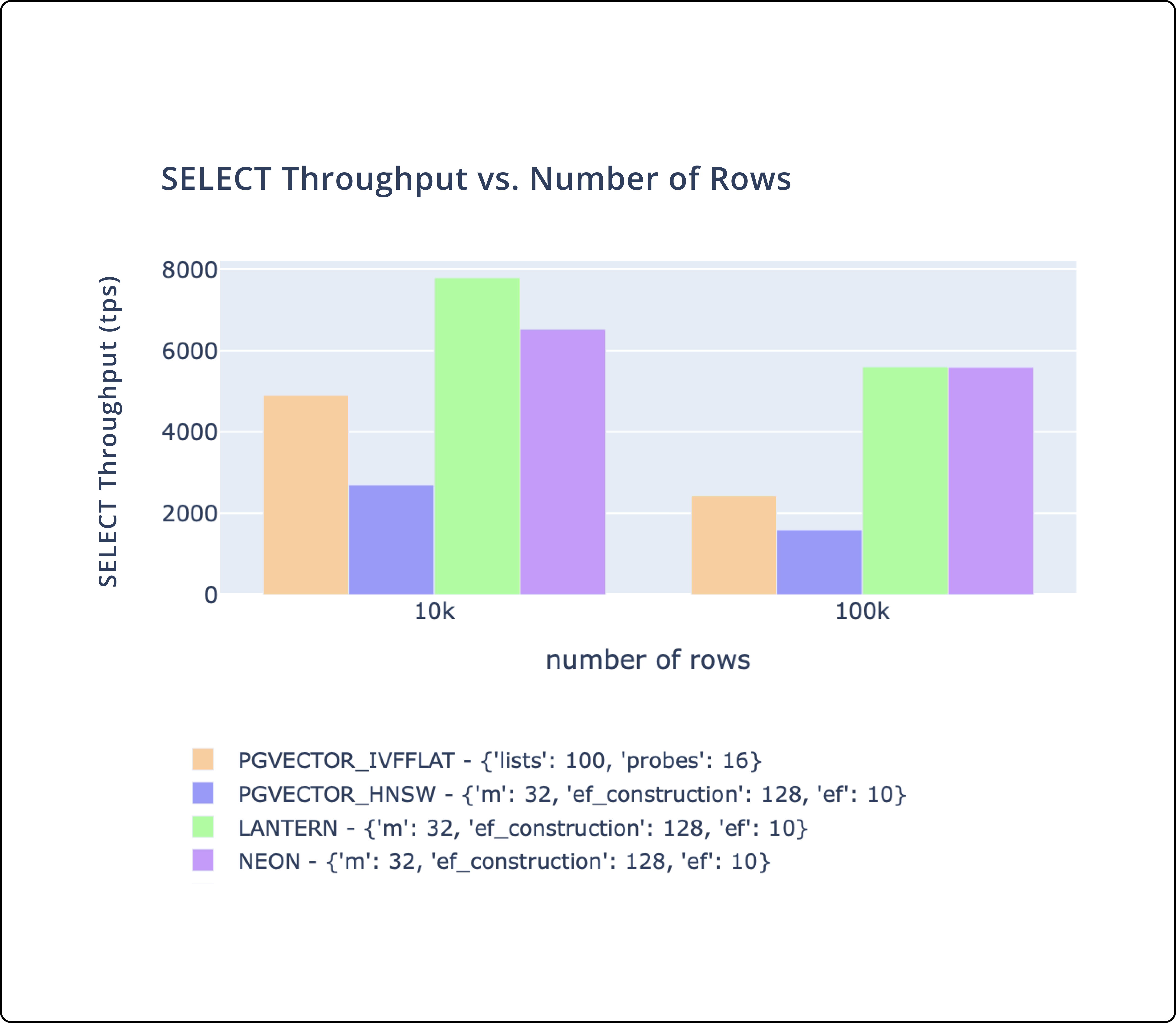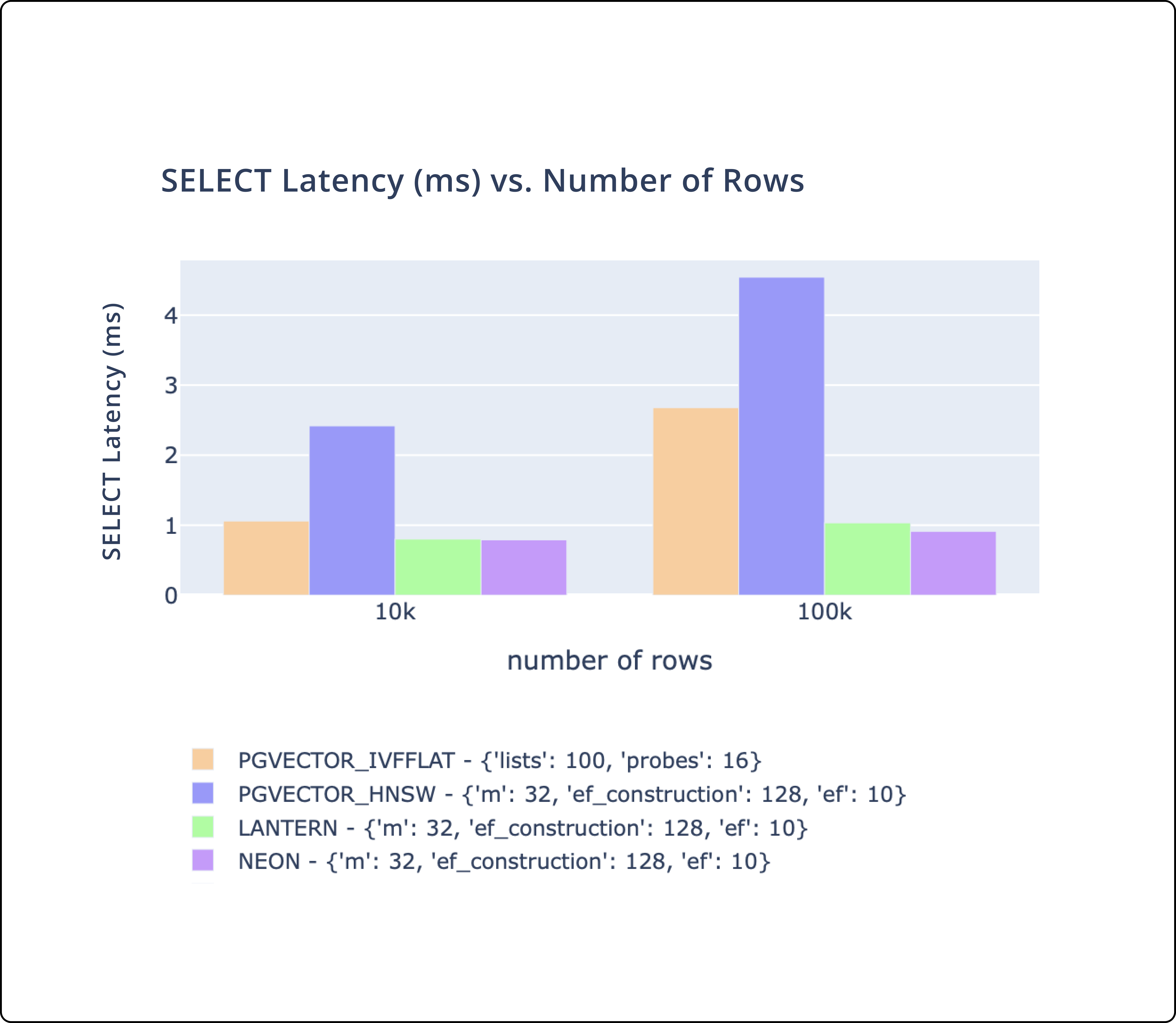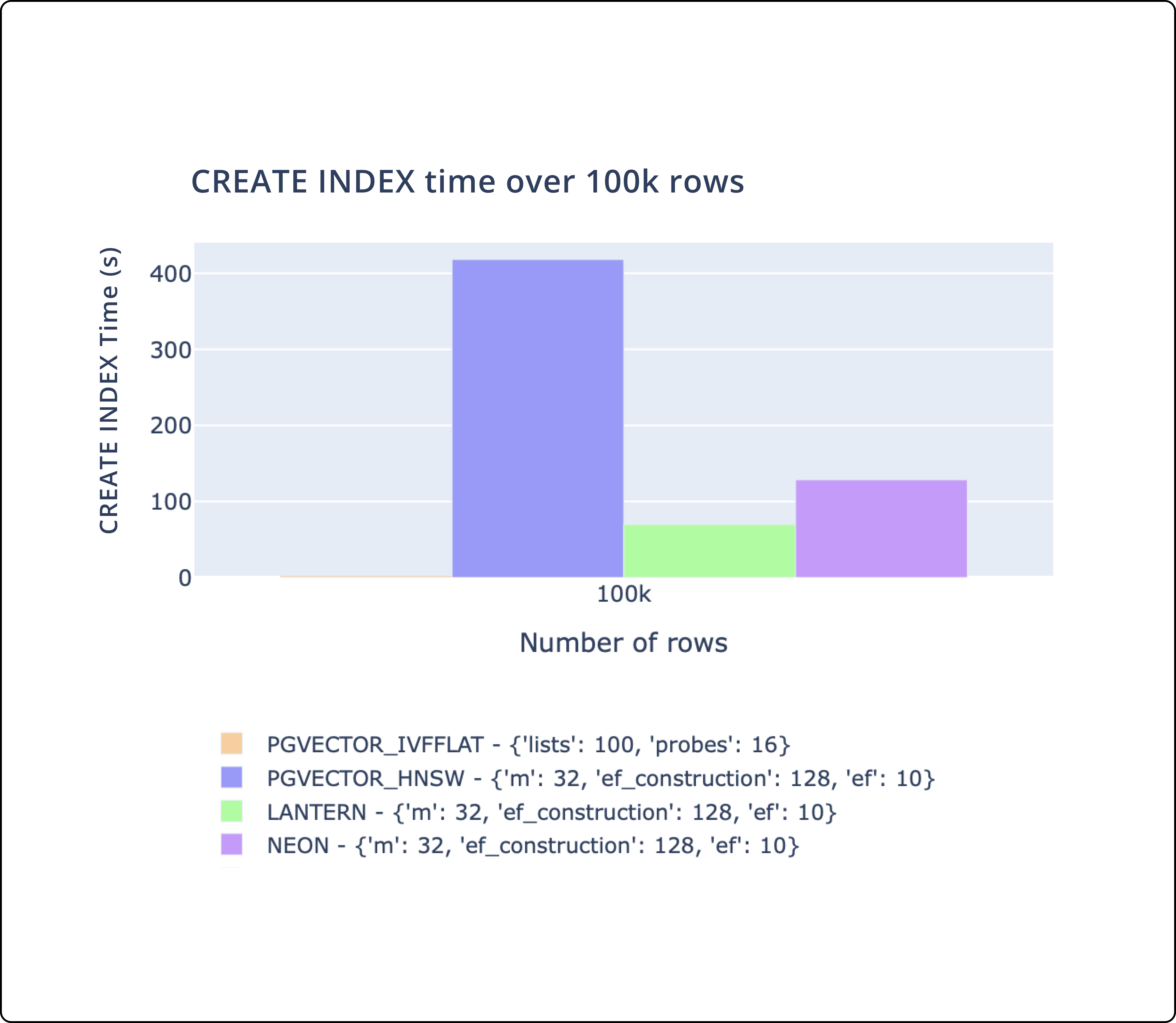https://github.com/lanterndata/lantern
PostgreSQL vector database extension for building AI applications
https://github.com/lanterndata/lantern
ai ann approximate-nearest-neighbor-search data-science database embeddings hnsw image-search knn machine-learning mlops nearest-neighbor-search neural-search open-source postgres postgresql search vector ycombinator
Last synced: 6 months ago
JSON representation
PostgreSQL vector database extension for building AI applications
- Host: GitHub
- URL: https://github.com/lanterndata/lantern
- Owner: lanterndata
- License: agpl-3.0
- Created: 2023-07-11T00:22:57.000Z (over 2 years ago)
- Default Branch: main
- Last Pushed: 2024-12-12T11:38:34.000Z (11 months ago)
- Last Synced: 2025-04-11T14:19:41.523Z (7 months ago)
- Topics: ai, ann, approximate-nearest-neighbor-search, data-science, database, embeddings, hnsw, image-search, knn, machine-learning, mlops, nearest-neighbor-search, neural-search, open-source, postgres, postgresql, search, vector, ycombinator
- Language: Rust
- Homepage: https://lantern.dev
- Size: 1.95 MB
- Stars: 842
- Watchers: 6
- Forks: 61
- Open Issues: 40
-
Metadata Files:
- Readme: README.md
- Changelog: CHANGELOG.md
- Contributing: CONTRIBUTING.md
- License: LICENSE
Awesome Lists containing this project
README
# 💡 Lantern
[](https://github.com/lanterndata/lantern/actions/workflows/build.yaml)
[](https://github.com/lanterndata/lantern/actions/workflows/test.yaml)
[](https://codecov.io/github/lanterndata/lantern)
[](https://replit.com/@lanterndata/lantern-playground#.replit)
Lantern is an open-source PostgreSQL database extension to store vector data, generate embeddings, and handle vector search operations.
It provides a new index type for vector columns called `lantern_hnsw` which speeds up `ORDER BY ... LIMIT` queries.
Lantern builds and uses [usearch](https://github.com/unum-cloud/usearch), a single-header state-of-the-art HNSW implementation.
## 🔧 Quick Install
If you don’t have PostgreSQL already, use Lantern with [Docker](https://hub.docker.com/r/lanterndata/lantern) to get started quickly:
```bash
docker run --pull=always --rm -p 5432:5432 -e "POSTGRES_USER=$USER" -e "POSTGRES_PASSWORD=postgres" -v ./lantern_data:/var/lib/postgresql/data lanterndata/lantern:latest-pg15
```
Then, you can connect to the database via `postgresql://$USER:postgres@localhost/postgres`.
To install Lantern using `homebrew`:
```
brew tap lanterndata/lantern
brew install lantern && lantern_install
```
You can also install Lantern on top of PostgreSQL from our [precompiled binaries](https://github.com/lanterndata/lantern/releases) via a single `make install`.
Alternatively, you can use Lantern in one click using [Replit](https://replit.com/@lanterndata/lantern-playground#.replit).
## 🔧 Build Lantern from source code on top of your existing PostgreSQL
Prerequisites:
```
cmake version: >=3.3
gcc && g++ version: >=11 when building portable binaries, >= 12 when building on new hardware or with CPU-specific vectorization
PostgreSQL 11, 12, 13, 14, 15 or 16
Corresponding development package for PostgreSQL (postgresql-server-dev-$version)
```
To build Lantern on new hardware or with CPU-specific vectorization:
```
git clone --recursive https://github.com/lanterndata/lantern.git
cd lantern
cmake -DMARCH_NATIVE=ON -S lantern_hnsw -B build
make -C build install -j
```
To build portable Lantern binaries:
```
git clone --recursive https://github.com/lanterndata/lantern.git
cd lantern
cmake -DMARCH_NATIVE=OFF -S lantern_hnsw -B build
make -C build install -j
```
## 📖 How to use Lantern
Lantern retains the standard PostgreSQL interface, so it is compatible with all of your favorite tools in the PostgreSQL ecosystem.
First, enable Lantern in SQL (e.g. via `psql` shell)
```sql
CREATE EXTENSION lantern;
```
Note: After running the above, lantern extension is only available on the current postgres DATABASE (single postgres instance may have multiple such DATABASES).
When connecting to a different DATABASE, make sure to run the above command for the new one as well. For example:
```sql
CREATE DATABASE newdb;
\c newdb
CREATE EXTENSION lantern;
```
Create a table with a vector column and add your data
```sql
CREATE TABLE small_world (id integer, vector real[3]);
INSERT INTO small_world (id, vector) VALUES (0, '{0,0,0}'), (1, '{0,0,1}');
```
Create an hnsw index on the table via `lantern_hnsw`:
```sql
CREATE INDEX ON small_world USING lantern_hnsw (vector);
```
Customize `lantern_hnsw` index parameters depending on your vector data, such as the distance function (e.g., `dist_l2sq_ops`), index construction parameters, and index search parameters.
```sql
CREATE INDEX ON small_world USING lantern_hnsw (vector dist_l2sq_ops)
WITH (M=2, ef_construction=10, ef=4, dim=3);
```
Start querying data
```sql
SET enable_seqscan = false;
SELECT id, l2sq_dist(vector, ARRAY[0,0,0]) AS dist
FROM small_world ORDER BY vector <-> ARRAY[0,0,0] LIMIT 1;
```
### A note on operators and operator classes
Lantern supports several distance functions in the index
There are 3 operators available `<->` (l2sq), `<=>` (cosine), `<+>` (hamming).
There are four defined operator classes that can be employed during index creation:
- **`dist_l2sq_ops`**: Default for the type `real[]`
- **`dist_vec_l2sq_ops`**: Default for the type `vector`
- **`dist_cos_ops`**: Applicable to the type `real[]`
- **`dist_vec_cos_ops`**: Applicable to the type `vector`
- **`dist_hamming_ops`**: Applicable to the type `integer[]`
### Index Construction Parameters
The `M`, `ef`, and `ef_construction` parameters control the performance of the HNSW algorithm for your use case.
- In general, lower `M` and `ef_construction` speed up index creation at the cost of recall.
- Lower `M` and `ef` improve search speed and result in fewer shared buffer hits at the cost of recall. Tuning these parameters will require experimentation for your specific use case.
### Miscellaneous
- If you have previously cloned Lantern and would like to update run `git pull && git submodule update --recursive`
## ⭐️ Features
- Embedding generation for popular use cases (CLIP model, Hugging Face models, custom model)
- Interoperability with pgvector's data type, so anyone using pgvector can switch to Lantern
- Parallel index creation via an external indexer
- Ability to generate the index graph outside of the database server
- Support for creating the index outside of the database and inside another instance allows you to create an index without interrupting database workflows.
- See all of our helper functions to better enable your workflows
## 🏎️ Performance
Important takeaways:
- There's three key metrics we track. `CREATE INDEX` time, `SELECT` throughput, and `SELECT` latency.
- We match or outperform pgvector and pg_embedding (Neon) on all of these metrics.
- We plan to continue to make performance improvements to ensure we are the best performing database.



## 🗺️ Roadmap
- Cloud-hosted version of Lantern - Sign up [here](https://lantern.dev)
- Hardware-accelerated distance metrics, tailored for your CPU, enabling faster queries
- Templates and guides for building applications for different industries
- More tools for generating embeddings (support for third party model API’s, more local models)
- Support for version control and A/B test embeddings
- Autotuned index type that will choose appropriate creation parameters
- Support for 1 byte and 2 byte vector elements, and up to 8000 dimensional vectors ([PR #19](https://github.com/lanterndata/lantern/pull/19))
- Request a feature at [support@lantern.dev](mailto:support@lantern.dev)
## 📚 Resources
- [GitHub issues](https://github.com/lanterndata/lantern/issues): report bugs or issues with Lantern
- Need support? Contact [support@lantern.dev](mailto:support@lantern.dev). We are happy to troubleshoot issues and advise on how to use Lantern for your use case
- We welcome community contributions! Feel free to open an issue or a PR. If you contact [support@lantern.dev](mailto:support@lantern.dev), we can find an open issue or project that fits you